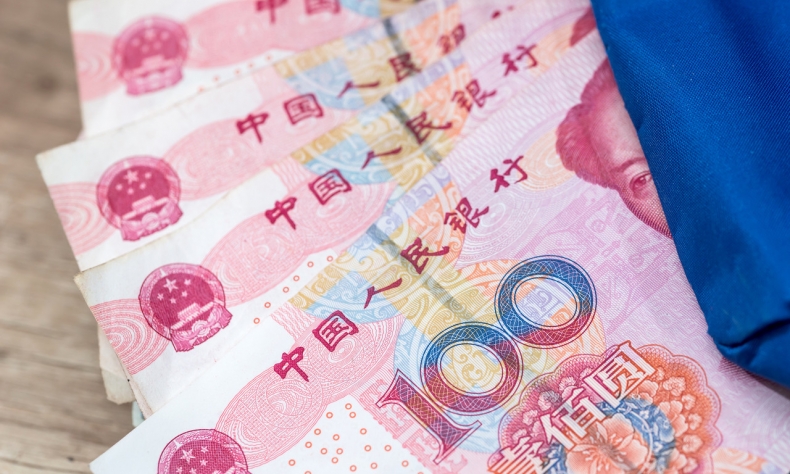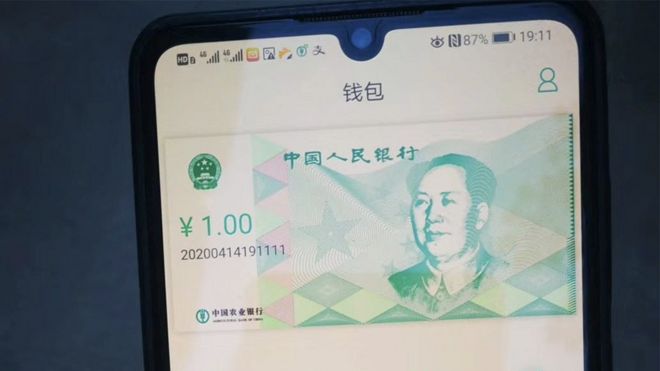
China’s Digital Currency a Game Changer Both at Home and Abroad
China has recently stepped up trials for a digital version of its currency. But what does this move mean for its own financial system, and what impact could it have on international markets?
Chinese banks have begun their largest and most extensive tests to date on what would be the world’s first sovereign digital currency.
On August 6, four of China’s largest banks — Bank of China, China Construction Bank, Industrial and Commercial Bank of China and Agricultural Bank of China—stepped up work on China’s central bank digital currency (CBDC), trialling it in a number of cities. Selected customers will now be allowed to perform everyday banking tasks such as topping up their accounts, withdrawing money, making payments and transferring money using the digital system in the largest trial of the “digital yuan” yet.

Despite the onset of the coronavirus, testing has escalated over recent months, with a number of companies signing up to use the new service including ride-sharing app Didi Chuxing, delivery food giant Meituan and Chinese branches of foreign companies including McDonalds, KFC, Subway and Starbucks.
Though no date has yet been announced for the full implementation of China’s CBDC, it seems the adoption of a sovereign digital currency in China is no longer an if but when, a decision that brings a number of opportunities and challenges to both China’s financial system and international markets.
Domestic market needs digital currency
Within China, the need for a digital currency has being growing for years as the country looks to expand its digital economy. With fast internet access covering over 90 percent of cities and an explosion of platforms offering customers the chance to enjoy a number of different services all from one place, the need for a central digital currency has been enormous.
But the coronavirus pandemic has accelerated this need further, with people now conducting more and more transactions from their homes and relying on online services. During the first half of 2020, online sales of commodities increased by 14.3 percent, rising 25.7 percentage points higher than the growth of total retail sales of consumer goods.
According to Lucy Gazamarian, an expert on mobile payments and co-chair of the blockchain committee of the FinTech Association of Hong Kong, this has made China’s need for a digital currency an “absolute necessity”.
“We have tech-enabled lives and are moving towards a digital economy; a digital economy which includes tokenization,” Gazamarian told business magazine Fortune.
“The new digital economy needs digital money. It needs fiat money in a digital format. Otherwise you’re having the threat of Bitcoin or Libra coins, or other coins that have the technology that can integrate into the new digital economy. So, it’s an absolute necessity that China, as well as every other central bank, upgrades their currency.”

Promote healthy habits and healthy banking system
The current paper-note Fiat system has also been highlighted as an unnecessary risk post-COVID-19, with notes seen as a potential method for the virus to spread. China made headlines in February for sterilizing bank notes to stop the virus’ contaminating people, and a digital currency would make transactions safer, and lower costs for the banks themselves.
Digitalising the yuan will not only help people’s health but ensure that China continues in its pursuit of a healthy banking system. Shadow banking in China, where financial intermediaries provide services similar to traditional commercial banks outside of normal banking regulations, increased in the first part of 2020, despite having fallen since 2017.
According to a report published by American business and financial services company Moody’s, shadow banking assets rose from 100 billion yuan ($14 billion) to 59.1 trillion yuan ($8.4 trillion) in the first quarter of 2020, compared with a 1.2 trillion yuan decline to 60.2 trillion yuan during the same period in 2019.
The China Banking and Insurance Regulatory Commission announced in June new measures to crack down on their usage, and their efforts would be aided by a digital currency, with centralised transactions making it easier to catch tax evaders and money launderers using digital transactions to mask their deeds.
Potential ramifications for foreign markets
There are also implications for foreign markets but one is not an imminent move to challenge the US dollar as the world’s reserve currency. The dollar has dominated global trade since the end of World War II and is highly integral to the world economy, making a replacement difficult to implement overnight.
That being said, China is responsible for an enormous amount of global trade, and the digitalization of the yuan could help facilitate transactions with other countries more easily, especially in emerging markets. The Belt and Road Initiative currently helps facilitate trade between China and over 70 countries and institutions totalling $1.34 trillion (9.27 trillion yuan) in 2019, up 10.8 percent year on year. Most transactions are carried out in dollars and then exchanged into Chinese yuan, but a digital version would allow for easier, safer and more convenient exchanges between suppliers and buyers engaged in this program, helping foster a better trading environment.
There is also the potential for the digital yuan to become part of a regional digital currency including Japan’s Yen and South Korea’s Won, something that could finally help secure a trilateral trade deal between the three countries.
But the impact of a digital yuan could be even more fundamental, especially as countries look to digitalise their own sovereign currencies. Unlike China, other nations have been slow to prepare for a move away from the current Fiat system, with cryptocurrencies such as Bitcoin and Facebook’s Libra taking the lead. Regulating them in the same way sovereign currencies are has been difficult for governments, causing logistical and legal headaches. In contrast, China has been developing its CBDC since 2014, and with this experience, it could very well act as a vital test case for foreign governments, and even a blue print for their own currencies, if testing is a success.
To what extent China’s experience is shared however depends on the actions of other countries. Talk of the Chinese Yuan usurping the US dollar as the dominant reserve currency has led to increased scepticism regarding the intentions of its digitalization. The next Group of 7 (G7) meeting is expected to include discussions on CBDC’s and to share ideas and expertise. Despite being further ahead with its trails than any G7 country, China has yet to have been extended an invite.
Although geo-political tensions are making exchanges problematic, such exclusion is not in the best interests of creating the next generation of rules for the worlds Fiat system. If countries are to make a seamless transition from paper-based money to CBDC then those with the greatest knowledge and expertise should be included in these discussions, to help negate the pitfalls and any potential loopholes which criminals can exploit.
Digital currencies are coming faster than many would have predicted, and therefore it is essential that when they do arrive, the rules that govern how they operate are universally agreed, especially as they are likely to be around longer than the current political tensions.
 Facebook
Facebook
 Twitter
Twitter
 Linkedin
Linkedin
 Google +
Google +










